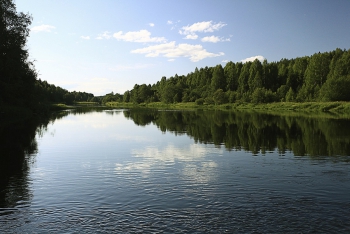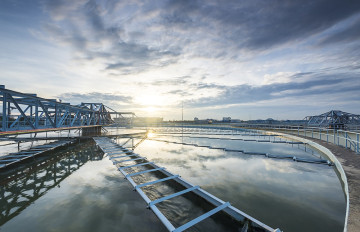Alarmingly, most of the world’s population live in water insecure countries today
– United Nations Global Water Security 2023 Assessment
As summer marches across the northern hemisphere, the impact of climate change is being felt around the globe. From Asia to Europe and across the United States to the islands of Hawaii, communities and businesses are enduring costly repercussions due to record-breaking heat waves and prolonged droughts, resulting in significant personal and financial losses.
Agriculture and manufacturing are the two sectors most impacted by water scarcity. However it also poses a threat to industries like renewable energy that must replace lost hydropower with alternative sources. Water scarcity has ripple effects on all sectors of the economy, to the point that global investors are sounding the alarm and urging business leaders to take serious action on water conservation.
Let’s look more closely at what individual businesses can do to assess their risks and enact practical solutions in the face of increasing water scarcity.
What Is Water Scarcity?
Water scarcity refers to the lack of sufficient, clean water resources to meet the needs of a population. According to the United Nations 2023 Global Water Security Assessment, 72% of the world’s population is water insecure.
Rapid population growth puts strain on existing water supplies, increasing the demand for water in agriculture, industry, and domestic use. Additionally, ineffective water management practices, such as over-extraction from groundwater sources and inadequate infrastructure, exacerbate the problem. Pollution from industrial and agricultural activities further diminishes the availability of clean water for consumption.
Rising temperatures and changing weather patterns have a significant impact on water availability and quality. Droughts, floods, and irregular rainfall patterns disrupt water cycles, affecting both surface and groundwater sources. As climate change intensifies, the frequency and severity of these events are likely to increase, intensifying water scarcity issues and impacting ecosystems, food security, and public health.
Water Scarcity and Business Practices
Water scarcity poses significant challenges to businesses across various sectors, impacting their operations and overall sustainability. Inefficient water management can also lead to legal, regulatory and reputational issues. Understanding and addressing the impact of water scarcity is crucial for businesses to remain competitive and resilient in an increasingly water-stressed world.
In regions prone to water scarcity, agricultural businesses may face reduced crop yields, affecting both their profitability and the availability of raw materials for other industries. Manufacturing companies heavily reliant on water-intensive processes may encounter production disruptions and higher operational costs due to limited water availability. Additionally, businesses that rely on clean water for their products, such as beverages and personal care items, may face reputational risks if they fail to demonstrate responsible water stewardship.
Water Risk Assessment
At its core, a water risk assessment involves evaluating the likelihood and severity of water-related risks that a business may face. This assessment provides a comprehensive understanding of the potential challenges and vulnerabilities that arise from water quantity and quality degradation, regulatory changes, and community concerns. Conducting a water risk assessment enables businesses to identify potential geographic hotspots and prioritize areas for action.
According to our Water Risk Assessment Methodology, these assessments are conducted with three primary goals in mind:
- To identify potential key risks to protect operations in the short to medium term.
- To help inform business objectives and decisions in the medium to long term, such as acquisitions or expansions.
- To begin water stewardship strategy development.
How Water Risk Assessments Work
Before conducting a water risk assessment, it is important to determine the boundaries of the assessment, such as local water facilities, regional infrastructure, or global operations.
From there, the targeted location is assessed for specific components. These include things like evaluating water availability and quality, assessing regulatory and legal requirements, examining the socio-economic impact of water scarcity, and considering stakeholder engagement and community concerns. Additionally, businesses may also analyze their water use and efficiency, supply chain dependencies, regulatory risk, and potential financial implications associated with water-related risks.
By considering these components, businesses gain a comprehensive understanding of their water risks and can develop effective strategies to address them.
Business Benefits of Conducting a Water Risk Assessment
Let's explore the business benefits of a water risk assessment:
- Identifying and mitigating risks: This enables businesses to develop effective strategies to mitigate risks, implement preventive measures, and develop contingency plans. Taking a proactive approach means businesses can minimize disruptions to their operations and safeguard their long-term viability.
- Enhancing resilience and adaptability: This ensures that businesses can continue to operate effectively even in the face of water scarcity, regulatory changes, or other water-related challenges. Enhancing resiliency not only protects the business but also provides a competitive advantage in an increasingly water-stressed world.
- Demonstrating sustainability and responsibility: Conducting a water risk assessment demonstrates a company’s commitment to sustainability and responsible water management. Stakeholders, including customers, investors, and communities, increasingly expect businesses to take proactive steps to address environmental challenges.
- Identifying opportunities for innovation and efficiency: By evaluating water usage patterns, supply chain dependencies, and potential financial implications, businesses can identify areas where they can improve efficiency and reduce water consumption.
- Meeting legal and regulatory requirements: Water risk assessments help businesses stay compliant with legal and regulatory requirements related to water management. Failure to comply with these requirements can result in legal and financial consequences and potential operational disruptions.
Practical Solutions for Reducing Water Risk
There are several practical solutions that businesses can employ to ensure water security and reduce water risk. Here are some key strategies:
- Using water efficiently: Implementing water efficiency measures is a crucial step towards reducing water risk. Businesses can conduct water audits to identify areas of water waste and implement measures to optimize water use in their operations.
- Recycling and reusing water: Treating and reusing wastewater from operations enables businesses to maximize the utilization of water resources. This approach not only conserves water but also helps protect water quality and reduces the strain on freshwater sources.
- Collaborating with supply chain partners: Collaboration with suppliers, partners, and stakeholders along the supply chain is crucial for ensuring water security. Businesses can work with their suppliers to encourage sustainable water practices.
- Engaging community and partners: Engaging with local communities, NGOs, and governmental organizations is essential for effective water risk reduction. Businesses can collaborate with local communities to support water infrastructure development, conservation projects, and education initiatives.
- Advocating for sustainable policies: Businesses can advocate for sound water management policies and engage with policymakers to drive positive change. By actively participating in policy discussions, businesses can help shape regulations that support sustainable water practices, encourage investment in water infrastructure, and promote water stewardship across industries.
Water Scarcity Necessitates Action
The growing water scarcity challenges around the world necessitate proactive measures from businesses to ensure water security and reduce water risk. Conducting a water risk assessment is crucial for identifying vulnerabilities, mitigating risks, and developing effective strategies.
These efforts not only protect operations but also contribute to a more water-secure future. By taking action now, businesses can lead the way in responsible water stewardship and make a positive impact on global water resources.
Want more news and insights like this?
Sign up for our monthly e-newsletter, The New Leaf. Our goal is to keep you updated, educated, and even a bit entertained as it relates to all things EHS and sustainability.
Have any questions?
Contact us to discuss your environment, health, safety, and sustainability needs today.









